How to store potatoes to prevent sprouting |
Potatoes are among the most “capricious” vegetables when it comes to storage. With a sharp drop in temperature, they easily freeze; with an increase, they dry out, rot, or sprout prematurely. To avoid losses and overgrowth in the cellar, it is important to create optimal conditions.
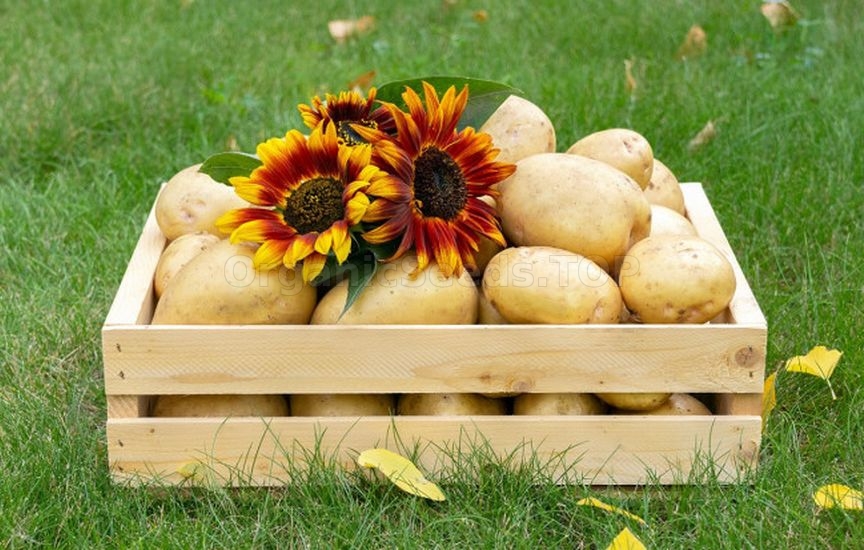 In addition to temperature, tubers are extremely sensitive to air humidity and light exposure. With a lot of light, they turn green due to accumulated solanine, and while this is not dangerous and even beneficial for seed potatoes, it is unsafe to eat such harvests, as this substance is toxic. In a warm and dry environment, potatoes lose a lot of moisture, becoming flabby and dry, and in high temperature and humidity, the tubers awaken and begin to grow even in the cellar. How to prepare tubers for storageSo, after extracting the tubers from the ground, it is advisable to let them dry a little. It is enough to leave the harvest in a shaded place for a couple of hours – after this time, soil residues on the tubers will be removed without unnecessary friction.
Cleaning and curing 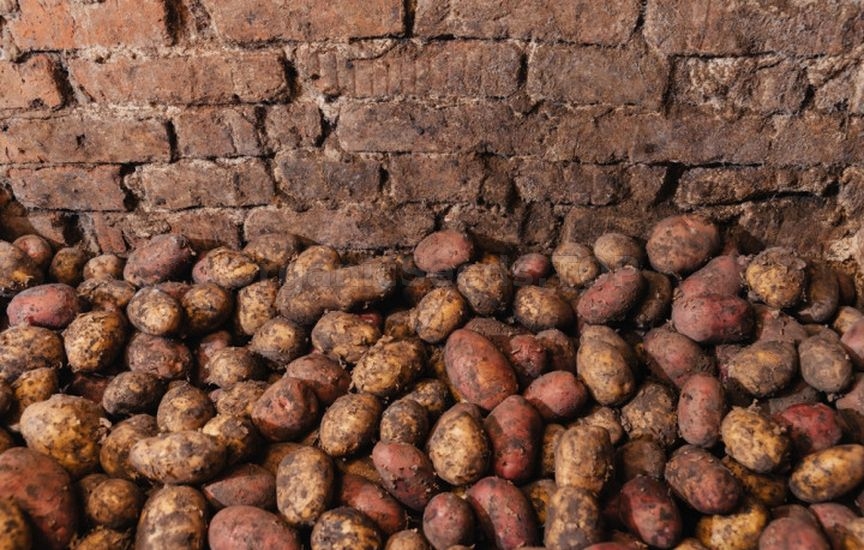 After thorough cleaning from soil, potatoes are placed in a specially prepared room. A dry and dark shed or garage with a temperature of 12 to 18°C is ideal. In such conditions, potatoes should remain for about 1.5–2 weeks. During this period, the tubers will dry completely and mature. An important result of this “holding” period will be the strengthening of the tuber skin, which becomes a reliable protective barrier against various diseases. In addition, all minor injuries received during harvesting and transportation will have time to heal. This time frame also allows identifying potential problems with the harvest: unnoticed damage and disease symptoms will appear. If detected, damaged tubers should be immediately separated from healthy ones and used first or discarded. Sorting 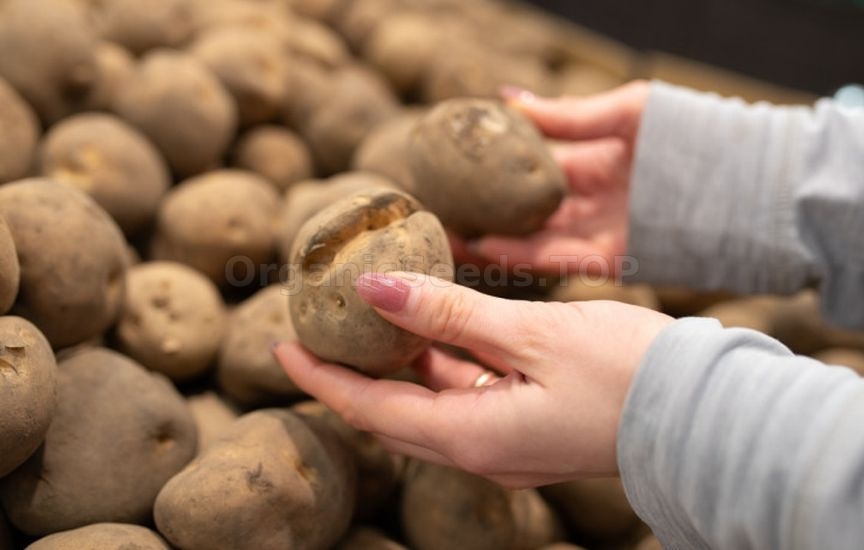 Preparing potatoes for storage involves careful sorting of the harvested crop. The primary task is selecting seed material, which must be stored separately from tubers intended for consumption. After separating seed potatoes, the remaining ones should be sorted by size. It is recommended to store large and medium tubers in different places and use the larger ones first. This is due to their increased tendency to spoil. For long-term storage, select only smooth, firm tubers with dense skin, without signs of sprouting, mechanical damage, or spots. Remember that only mid-season and late varieties are suitable for long-term storage. With proper preparation and suitable conditions, tubers will retain their appearance and taste until the end of the next spring. Early potatoes, despite all efforts, will begin to lose flavor and sprout much earlier. Fungicide treatment 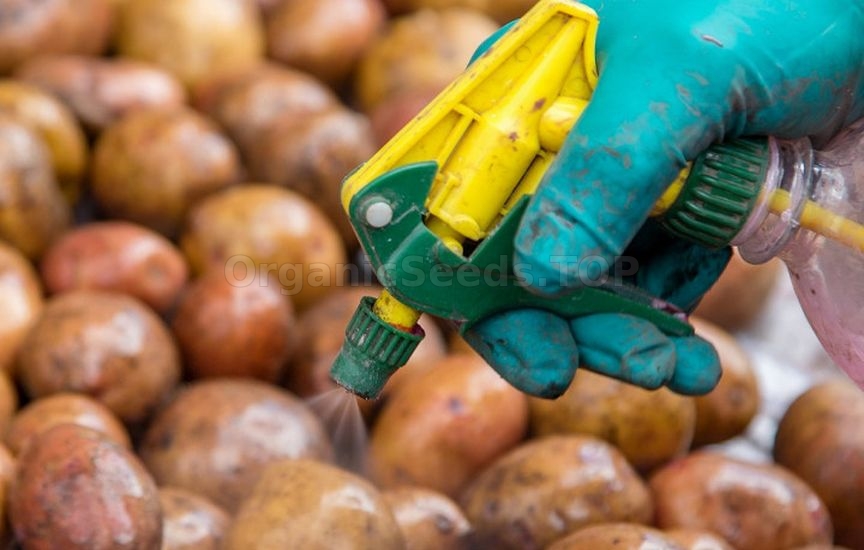 To improve crop preservation during storage, it is advisable to treat tubers with fungicidal preparations. Biological products such as Fitosporin-M effectively protect against fungal diseases. Potatoes intended for planting, not consumption, can be sprayed with stronger treatments (Maxim). After treatment with any of these products, potatoes must be thoroughly dried and only after complete drying placed into long-term storage. Where to store potatoesOwners of private houses with cellars have the easiest solution for storing potato harvests. But even gardeners without access to underground facilities can organize storage in accessible areas – on the balcony or in the hallway.
Cellar or basement 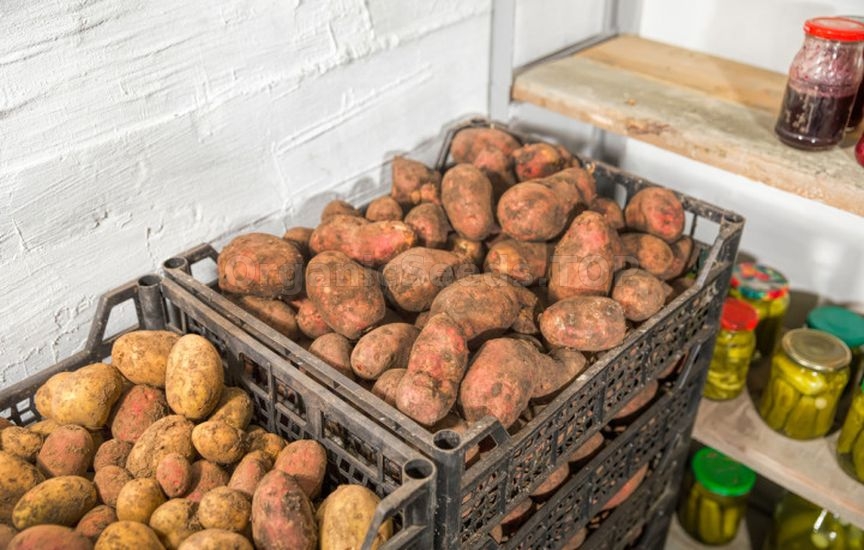 Underground basements and cellars have a major advantage – they can maintain a stable temperature of 4–6°C year-round. This creates ideal conditions for long-term potato storage. Before placing the harvest in storage, the room must be thoroughly prepared: clean all surfaces from mold, disinfect boxes and other containers. It is important to seal cracks in walls and floors through which rodents can enter. As additional protection, ultrasonic repellents can be installed. Constant ventilation of the storage is also necessary. For this, a supply and exhaust ventilation system is arranged, placing the air intake hole at the bottom of one wall and the exhaust at the top of the opposite wall. 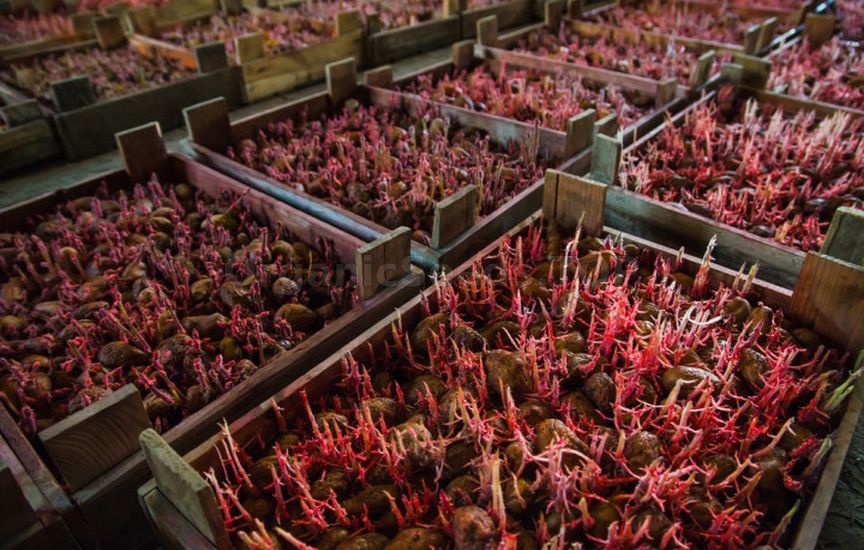 The optimal temperature for storing potatoes in cold seasons is 2 to 5°C, and humidity should not exceed 70–80%. Under these conditions, even early varieties retain their quality throughout winter without premature sprouting. During severe frosts, monitor the storage temperature, preventing it from dropping below 1.5°C. Note that increased temperature accelerates the exit of potatoes from dormancy, provoking sprouting. If it is impossible to maintain the ideal temperature regime, it is recommended to regularly sort the tubers and remove emerging sprouts. Box in the hallway 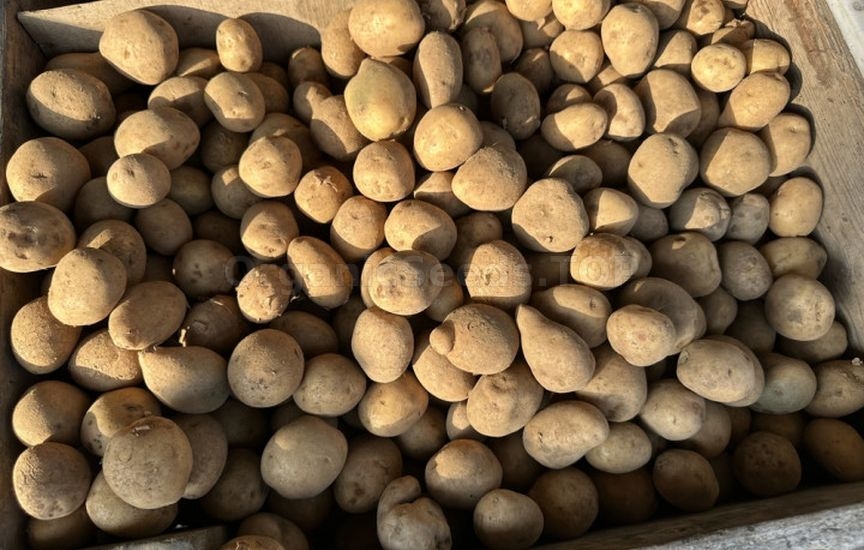 Many gardeners without a cellar or basement store potatoes in large wooden boxes placed in the hallway near the apartment entrance. This method has obvious advantages. First of all, the temperature in the hallway of an apartment building in winter usually does not rise above 10–12°C – not ideal, but better than inside the apartment. Also, the tubers are literally at hand and do not require special attention during storage. However, this method has drawbacks. The main problem is the instability of the temperature regime, which can lead to spoilage due to drying or rotting. Also, when using this method, it is important to consider the varietal characteristics of potatoes: late varieties can last up to 100 days even in warmth, while early and mid-season ones will sprout quite quickly. Balcony 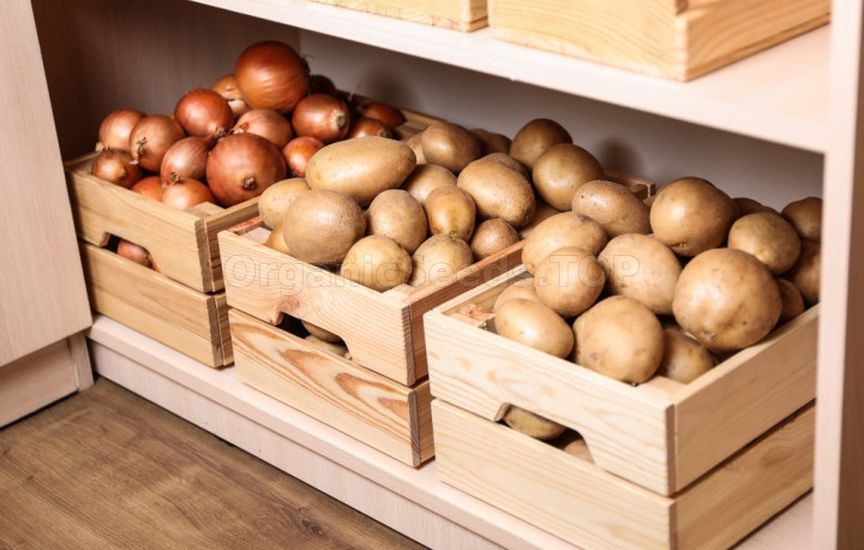 Storing potatoes on the balcony in a wooden box is another alternative to the traditional cellar. However, this method requires a special approach to preparing the container. The box should be as dense as possible, with minimal gaps. If the balcony is not glazed, additional insulation is needed, such as an old blanket or foam. On a glazed loggia, additional insulation is not required. This method has some advantages. First, it offers a lower temperature compared to the apartment and hallway. Second, it allows regular monitoring of tuber condition and adjusting temperature and humidity levels as needed. With proper care, potatoes can be stored almost until mid-spring. However, balcony storage carries certain risks.
Therefore, potatoes must be protected from light and kept at optimal humidity levels of 40–50%. The second key condition for successful storage is proper ventilation to prevent rot development. You may need:Organic Fertilizers |
|
|
